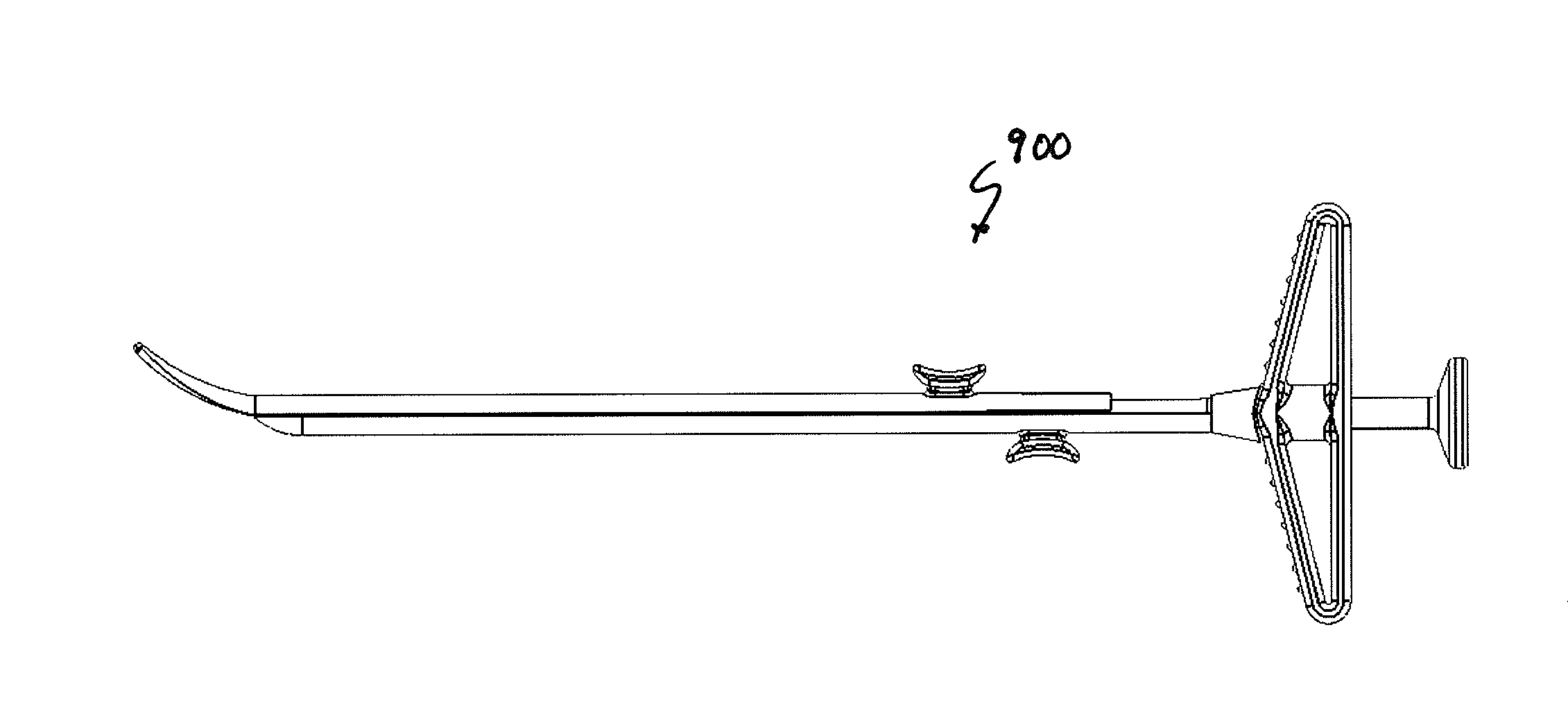Devices, systems and methods for meniscus repair
a meniscus and system technology, applied in the field of meniscus repair devices, can solve the problems of damage to the surrounding articular cartilage, pain and loss of joint function, and early arthritis, and achieve the effect of preventing tissue damage and preventing tissue damag
- Summary
- Abstract
- Description
- Claims
- Application Information
AI Technical Summary
Benefits of technology
Problems solved by technology
Method used
Image
Examples
Embodiment Construction
[0080]Described herein are suture passers for meniscus repair. In general, these devices may be referred to herein as meniscus repair suture passers, meniscus repair devices, or simply suture passers. The devices described herein may be configured to repair a meniscus (knee joint meniscus), and may have two arms which extend longitudinally and can be expanded around a meniscus from a lateral (central) approach. Typically, the distal end region (e.g., the distal-most 3 or less cm) of one of the arms is bent or bendable at an angle away from the long axis of the device, and the other arm is axially movable distally and proximally (in the direction of the long axis of the device). Extending the distally and proximally movable arm distally will form an acute angled opening at the distal end that can be positioned around the meniscus, and a suture can be passed from one arm to the other through the meniscus or adjacent tissues to repair meniscal tears. The suture may be passed back and f...
PUM
 Login to View More
Login to View More Abstract
Description
Claims
Application Information
 Login to View More
Login to View More - R&D
- Intellectual Property
- Life Sciences
- Materials
- Tech Scout
- Unparalleled Data Quality
- Higher Quality Content
- 60% Fewer Hallucinations
Browse by: Latest US Patents, China's latest patents, Technical Efficacy Thesaurus, Application Domain, Technology Topic, Popular Technical Reports.
© 2025 PatSnap. All rights reserved.Legal|Privacy policy|Modern Slavery Act Transparency Statement|Sitemap|About US| Contact US: help@patsnap.com



